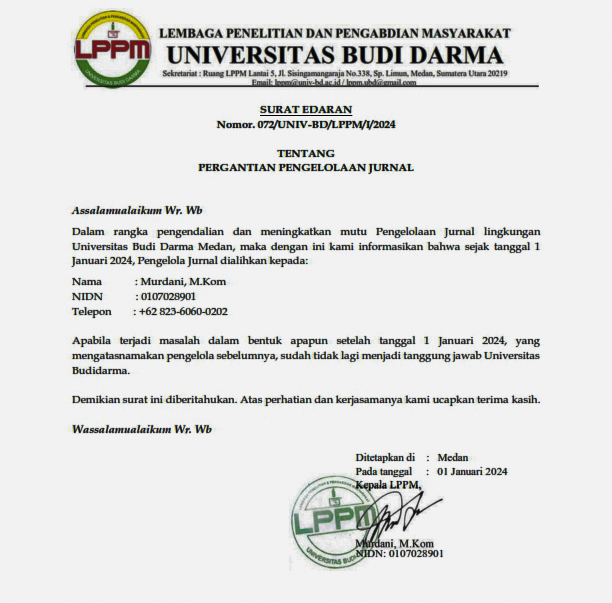Analisis Sentimen Komentar Youtube Tentang Relawan Patwal Ambulance Menggunakan Algoritma Naïve Bayes dan Decision Tree
DOI:
https://doi.org/10.30865/json.v4i2.4941Keywords:
Analisis Sentimen, Naive Bayes, Decision Tree, Rapid Miner, Data MiningAbstract
The presence of the ambulance patrol is sometimes considered disturbing by the community, many people's opinions are still pro and contra about the actions carried out by civilian ambulance patrol volunteers because they are considered illegal and sometimes also arrogant. In this study. the researchers wanted to know the opinions and responses of the public about the actions taken by civilian ambulance patrol volunteers. The method used in this study is to perform sentiment analysis with data mining techniques to find the polarity of sentences in a document using the Naïve Bayes and Decision Tree algorithms. The initial steps in this research were collecting comment data by scraping YouTube comments using API Key Youtube V3, followed by manual data labeling, data cleaning, data preprocessing, and word weighting using TF-IDF. From the overall results of testing with 600 training data, the Naïve Bayes algorithm has a higher accuracy value of 66.72% while the Recall value is 64.98%. Testing with the Decision Tree algorithm in this study has a higher Recall compared to Naïve Bayes. %. From the results of the YouTube comment dataset used in this study, it can be concluded that the Naïve Bayes algorithm has a higher accuracy value than the Decision Tree algorithm, so it can be concluded that Naïve Bayes has the best accuracy in the YouTube comment dataset used in this study.References
M. Syarifuddinn, “Analisis Sentimen Opini Publik Terhadap Efek Psbb Pada Twitter Dengan Algoritma Decision Tree,Knn, Dan Naïve Bayes,†INTI Nusa Mandiri, vol. 15, no. 1, pp. 87–94, 2020, doi: 10.33480/inti.v15i1.1433.
A. Harun and D. P. Ananda, “Analisa Sentimen Opini Publik Tentang Vaksinasi Covid-19 di Indonesia Menggunakan Naïve Bayes dan Decission Tree,†MALCOM Indones. J. Mach. Learn. Comput. Sci., vol. 1, no. 1, pp. 58–63, 2021.
R. Puspita and A. Widodo, “Perbandingan Metode KNN, Decision Tree, dan Naïve Bayes Terhadap Analisis Sentimen Pengguna Layanan BPJS,†J. Inform. Univ. Pamulang, vol. 5, no. 4, p. 646, 2021, doi: 10.32493/informatika.v5i4.7622.
M. F. A. BASHRI and R. KUSUMANINGRUM, “Analisis Sentimen Menggunakan Latent Dirichlet Allocation dan Visualisasi Topic Polarity Wordcloud.†Universitas Diponegoro, 2017.
O. W.Purbo, Text Mining. Bandung: Andi, 2019.
P. Arsi and R. Waluyo, “Analisis Sentimen Wacana Pemindahan Ibu Kota Indonesia Menggunakan Algoritma Support Vector Machine (SVM),†J. Teknol. Inf. dan Ilmu Komput., vol. 8, no. 1, p. 147, 2021, doi: 10.25126/jtiik.0813944.
R. P. Sidiq, B. A. Dermawan, and Y. Umaidah, “Sentimen Analisis Komentar Toxic pada Grup Facebook Game Online Menggunakan Klasifikasi Naïve Bayes,†J. Inform. Univ. Pamulang, vol. 5, no. 3, p. 356, 2020, doi: 10.32493/informatika.v5i3.6571.
E. M. Zamzami, “Aplikasi Edutainment Pendukung Pembelajaran Jarak Jauh TK Merujuk Standar Nasional PAUD,†J. Obs. J. Pendidik. Anak Usia Dini, vol. 5, no. 2, pp. 985–995, 2020, doi: 10.31004/obsesi.v5i2.750.
S. Syarli and A. Muin, “Metode Naive Bayes Untuk Prediksi Kelulusan (Studi Kasus: Data Mahasiswa Baru Perguruan Tinggi),†J. Ilm. Ilmu Komput., vol. 2, no. 1, pp. 22–26, 2016.
A. Wanhari, “Perbandingan Algoritma C4. 5 dan Naive Bayes Untuk Klasifikasi Mustahik.†Fakultas Sains dan Teknologi UIN Syarif Hidayatullah Jakarta.
F. Salmon Pattiiha, “Perbandingan Metode K-NN, Naïve Bayes, Decision Tree untuk Analisis Sentimen Tweet Twitter Terkait Opini Terhadap PT PAL Indonesia,†J. Ris. Komputer), vol. 9, no. 2, pp. 2407–389, 2022, doi: 10.30865/jurikom.v9i2.4016.
I. D. Khazari, Sofalul; Marisa, Fitri; Wijaya, “Sistem Rekomendasi Penentuan Judul Skripsi Menggunakan Algoritma Decision Tree,†J. Teknol. dan Manaj. Inform., pp. 123–127, 2017.
M. R. Fajriansyah and Siswanto, “Analisis Sentimen Pengguna Twitter Terhadap Partai Politik Pendukung Calon Gubernur Di Jakarta Menggunakan Algoritma C4 . 5 Decision Tree Learning,†Skanika, vol. 1, no. 2, pp. 697–703, 2018, [Online]. Available: https://jom.fti.budiluhur.ac.id/index.php/SKANIKA/article/view/278
A. G. Salman, “Konsep Decision Tree & Random Forest,†2020. https://socs.binus.ac.id/2020/05/26/konsep-decision-tree-random-forest/
F. V. Sari and A. Wibowo, “Analisis Sentimen Pelanggan Toko Online Jd.Id Menggunakan Metode Naïve Bayes Classifier Berbasis Konversi Ikon Emosi,†J. SIMETRIS, vol. 10, no. 2, pp. 681–686, 2019.
K. M. Asshiddiqi, M.F, Lhaksamana, “Perbandingan Metode Decision Tree dan Support Vector Machine Untuk Analisis Sentimen Pada Instagram Mengenai Kinerja PSSI,†vol. 1, no. D, pp. 2019–2020, 2020.
V. A. Permadi, “Analisis Sentimen Menggunakan Algoritma Naive Bayes Terhadap Review Restoran di Singapura,†J. Buana Inform., vol. 11, no. 2, p. 140, 2020, doi: 10.24002/jbi.v11i2.3769.
M. A. Muslim et al., Data Mining Algoritma C4.5. 2019.
Downloads
Published
How to Cite
Issue
Section
License

This work is licensed under a Creative Commons Attribution 4.0 International License
Authors who publish with this journal agree to the following terms:
- Authors retain copyright and grant the journal right of first publication with the work simultaneously licensed under Creative Commons Attribution 4.0 International License that allows others to share the work with an acknowledgment of the work's authorship and initial publication in this journal.
- Authors are able to enter into separate, additional contractual arrangements for the non-exclusive distribution of the journal's published version of the work (e.g., post it to an institutional repository or publish it in a book), with an acknowledgment of its initial publication in this journal.
- Authors are permitted and encouraged to post their work online (e.g., in institutional repositories or on their website) prior to and during the submission process, as it can lead to productive exchanges, as well as earlier and greater citation of published work (Refer to The Effect of Open Access).





